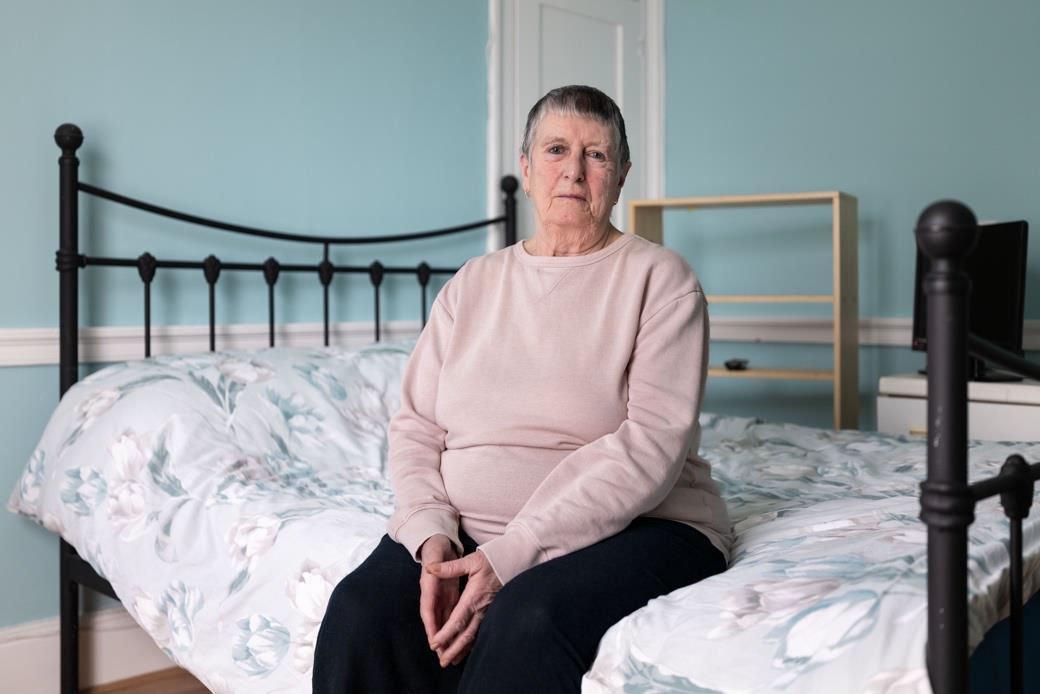Behind the doors of an almshouse in Brixton
- Published

One of the residents, Guy Hunting
To mark the 200th anniversary of Trinity Homes Almshouse in Brixton, photographer Jim Grover stepped inside to meet some of the current residents and delve into its history.
"I've often wondered what lay behind the blue front doors of this distinctive Georgian building on Brixton's busy Acre Lane," says Grover.
"Who lives there and what are their stories?
"How did it come to be here and who was the man whose name is prominently displayed above its doors? It's been a wonderful voyage of discovery for me, full of extraordinary revelations that span 200 years.
"I am so pleased to be able to throw open the doors and share the remarkable and inspiring stories that lie behind them."

The almshouse was built in 1822 and endowed in 1824 with £2,000 (equivalent to about £275,000 in today's money) by Thomas Bailey, a Brixton resident. Originally from Staffordshire, Bailey made his money as a partner in Neale & Bailey, a very successful retailer of china and cut glass in the late 18th and early 19th Century.
Trinity Asylum (as it was originally named) was for "pious aged women", it was not a mental asylum. Successful applicants for one of the original 12 apartments had to be aged between 57 and 67, single, have a small income, and have references that included confirmation of their religious faith.

Today Trinity Homes is a registered charity administered by a group of voluntary trustees.
Residents can furnish their rooms however they wish.
Guy Hunting, a published author and previously a footman at Buckingham Palace, has been a resident for 14 years. He scours local charity shops for artworks to add to his enormous collection.
"People aren't here by choice, some are here for unfortunate reason, by 'force majeure', but some are great fun."

Christine Holding became a resident in 2004. Her mother was previously a resident for more than 20 years.
Holding retired in 2020, at the age of 72, having previously spent 20 years as a dinner lady and housekeeper in a local school. Now 76, she has signed up to be a volunteer for The Patients Association in her local GP surgery.
"I've worked all my life, I've got to be doing something as I love meeting people," she says.

In 1996, Peter Avery became the first male resident of Trinity Homes, and men now comprise seven of the 17 residents.
Avery, now 84, a former senior lecturer at Central School of Art and Design, continues to be a very active artist and is currently designing a stage set for a south London theatre.
"I don't have a bedroom, it's my studio instead. I have a fold-up bed which I wheel out each night," says Avery.

Traces of former artist residents can be found in the communal gardens.


Like many almshouses, the layout includes a central communal area, in this case a garden. In the summer, some of the residents gather under the apple tree for a glass of wine together.

Andrew Taylor is the live-in warden, a role he has held since 2013.
"I've decided that now we have a newly decorated meeting room I'm going to see if we can get together a bit more. Start with a coffee morning and some homemade scones. We'll take it from there."

Wallee McDonnell is 72, and a resident since 2018. He volunteers for Celebrate Life, a Community Interest Company, for which he was a finalist in the 2024 Lambeth Civic Awards. He also facilitates peace education workshops in prisons.
"I was homeless," says McDonnell.
"I'd never had my own place, my own front door with a key."
Behind the Blue Doors can be seen in the exhibition gallery of the newly opened Lambeth Archives in Brixton until 1 June., external